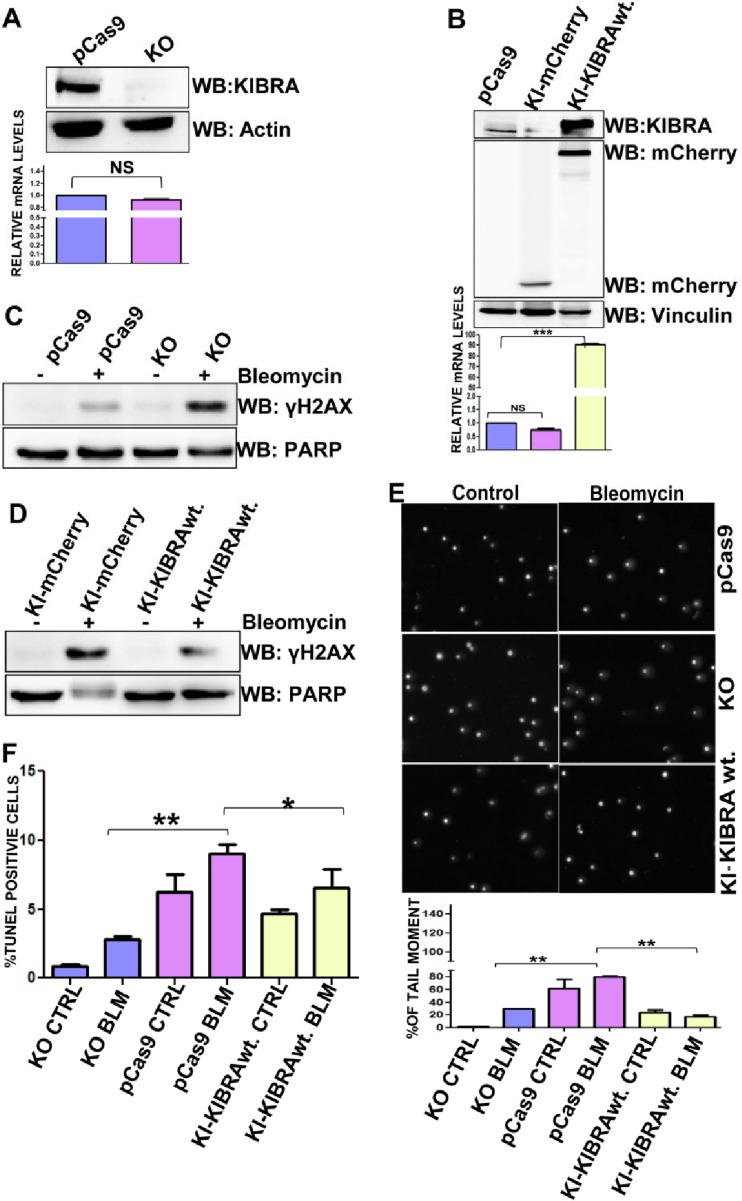FIG 6.
DNA repair functions of KIBRA modulate chemoresistance in cancer cells—insights from KIBRA knockout (KO) and knock-in (KI) model cells. (A) Western blot and RT-PCR analyses showing KIBRA stable knockout (KO) clones of the MDA-MB-231 cell line. (B) Western blot and RT-PCR analyses showing pCas9 KI-mCherry and KI-mCherry-KIBRA stable knock-in (KI) clones of the MDA-MB-231 cell line. (C and D) MDA-MB-231 pCas9, KIBRA-KO, and KIBRA-KI clones were treated or not treated with bleomycin for 2 h, and proteins separated using SDS-PAGE followed by blot analysis were probed with γH2Ax (phosphoserine 139); anti-PARP was used as a loading control. (E) Neutral comet assay histogram showing the percentages of tail moment of comets assessed for 100 individual comets using CaspLab software. Percentages of tail moment were compared between MDA-MB-231 Cas9, KIBRA-KO, and KIBRA-KI clones with or without bleomycin treatment. The KIBRA-KO clones were more sensitive to DNA-damaging agents than the KI-mCherry-KIBRA-wt. clones (one-way ANOVA). (F) Graph showing percentages of terminal deoxynucleotidyltransferase-mediated dUTP-biotin nick end labeling (TUNEL) populations of MDA-MB-231 Cas9, KIBRA-KO, and KIBRA-KI clones with bleomycin treatment or without treatment. KIBRA KO clones had a higher percentage of breaks than KI-mCherry-KIBRA wt. clones (one-way ANOVA). *, P < 0.05; **, P < 0.005; ***, P < 0.0005; NS, not significant.

